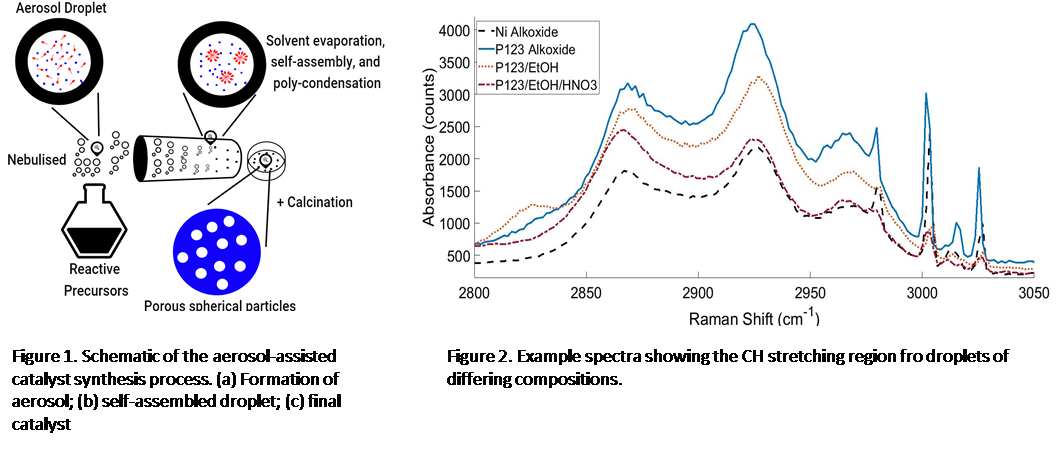2020 Virtual AIChE Annual Meeting
(513ey) Optical Trapping of Aerosol Sol-Gel Catalysts with in-Situ Raman Analysis
Authors
The catalyst studied is Ni/Al2O3, synthesised from a mixture of nickel nitrate hexahydrate, aluminium isopropoxide, ethanol, water, nitric acid and pluronic P123. Spectroscopic interrogation of droplets containing each component and mixtures of the components, up to and including the full synthesis mixture has been conducted (Figure 2). In addition, the effect of heating the droplets â a key synthesis step â has been investigated.
This work has successfully demonstrated that a single droplet comprising the reactive precursors can be successfully held in the optical trap, replicating the environment of aerosol-assisted synthesis. Raman spectroscopy shows several characteristic peaks for ethanol, aluminium isopropoxide, and nickel nitrate. Aluminium isopropoxide was observed to stabilise the droplet as compared to the droplet containing only ethanol, water, HNO3 and P123. This is attributed to a self-assembly process forming a macro structure; no hydrolysis reactions were observed. Upon inclusion of nickel nitrate hydrolysis and condensation reactions were inferred from the spectra obtained. As expected, droplet heating intensified the rate of evaporation and reaction within the droplets. This provides the first operando study of this process and furthers understanding of the synthesis mechanism.
